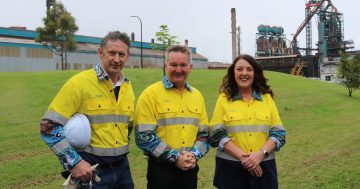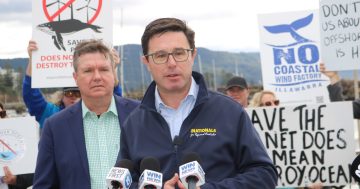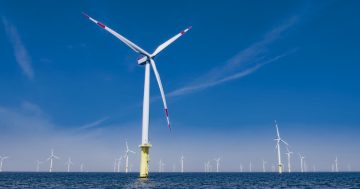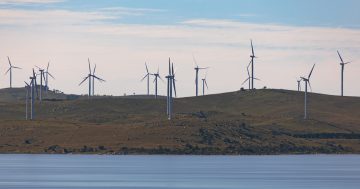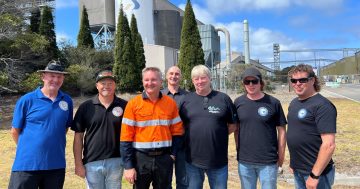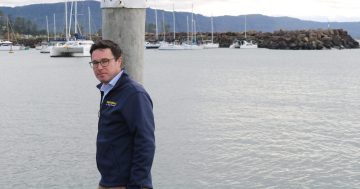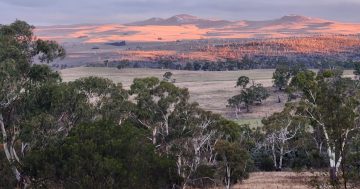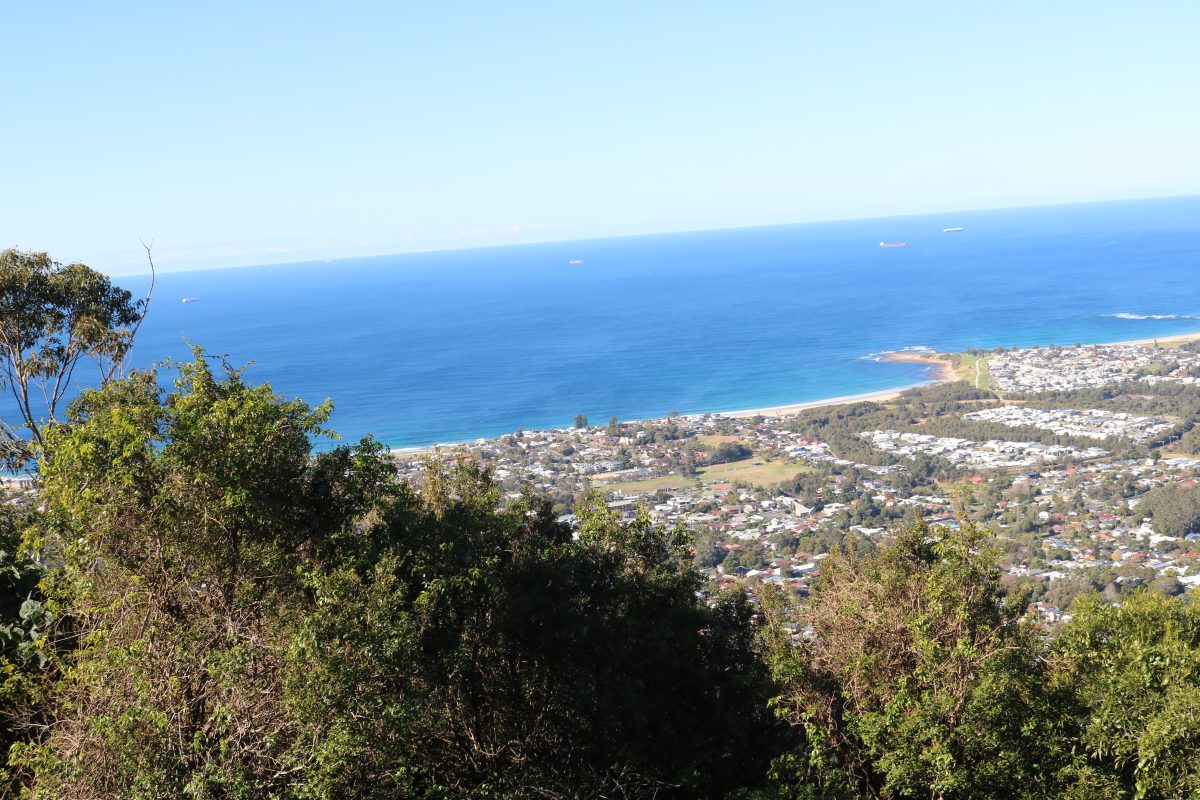
The Illawarra coast from Southern Gateway at Bulli Tops. “The scale of this project is unprecedented, covering a sweep of ocean twice the size of the Wollongong LGA.” Photo: Region Illawarra.
Public submissions on the proposal for a renewable energy zone off the Illawarra’s coast have been extended until 15 November. Region Illawarra asked The University of Wollongong’s Blue Energy’s Lab to explain why it is supporting the proposal, and the Coalition Against Offshore Energy the reasons why it should be rejected. This is the second in the two-part series.
Like so many others, I love our region. I consider myself a fair-minded person open to new ideas. I’m concerned about global warming and support renewable energy initiatives.
But it’s tough to consider hundreds of industrial turbines towering higher than five Olympic swimming pools on end, just 10 kilometres from our beaches and directly in the whale migration path, and not feel this is much too high a price to pay.
Too high a price – the desecration of our environment, the damage to our tourism industry – for a project that will essentially pour money into the coffers of private industry and help produce hydrogen for export overseas. Don’t be fooled into thinking these turbines will produce power for Illawarra homes.
The scale of this project is unprecedented, covering a sweep of ocean twice the size of the Wollongong LGA. The height and proximity to major residential areas makes the visual impact and other potential effects greater than any other such project in the world.
If you’ve tried to dig deeper, you’ve probably been shocked by the number of articles documenting the environmental destruction wreaked in other countries where offshore turbines – smaller and fewer in number than the ones proposed here – exist. And for every research paper, a project supporter will produce material showing there’s inconclusive evidence about those threats.
The reality is, there’s insufficient evidence, full stop.
The complete impacts of such a mammoth project are unknown and exclusion zones around overseas offshore turbine sites obstruct research about the deaths of whales, birds and other fauna.
So, we in the Illawarra are like crash test dummies, expected to trust the assurances of politicians and vested interest groups.
But here’s what we know.
The proposed location of this power plant is the relatively narrow continental shelf off our coast. Patterns of tracked whales show their migration path follows this exact route, placing approximately 40,000 whales on a twice-yearly collision course with hundreds of pieces of industrial infrastructure anchored to the sea bed.
The Illawarra has a rich variety of birdlife, with both sea birds and shore birds observed on the Five Islands Nature Reserve and coastal fringes since at least 1950. A number are threatened species protected under government legislation.
If it goes ahead as proposed, this project will change the face of our coastline during the day but also by night, when the turbines will be lit by flashing safety beacons. The visual effects go well beyond the risk to property values and tourism. They bite deep into the very essence of the Illawarra – the beauty of the coastline which, paired with the escarpment, defines us as a region.
And here’s what we fear: We’re gravely concerned about the impact on whales, seals and other sea creatures through the construction phase, the introduction of physical wires anchoring the 300 turbines and long-term maintenance activities. We’re worried about the impact of increased ocean noise on the entire marine habitat, and the effects of carcinogenic chemicals in turbine blades that will leach into the waters as their leading edges wear.
We’re concerned for the future of the region’s birdlife, given many of the European scientific papers on offshore wind farms and birds highlight a need for longer study periods to better assess the impacts.
The University of Wollongong’s own material details environmental risks including sea surface disturbance, habitat loss for birds and marine creatures, underwater noise and vibrations, turbidity, electromagnetic fields, sea floor disturbance and bird collisions.
We fear for the future of tourism as we return to our previous “steel city” image and visitors bypass us for unmarred beaches. For every job associated with this project, we may well lose a corresponding role in tourism.
Hang gliding and paragliding clubs believe they’ll have to cease flying from Stanwell Tops because wake turbulence from the turbines could be fatal for pilots. The end of hang gliding at Bald Hill, known as the birthplace of flight in Australia. Can you even imagine?
I could be cynical about the politics, that our region has been asked to swallow this burden because, like clockwork, we just keep voting a certain way – but in the end I hope our local political leaders look inside themselves as humans and ask, “Is this really OK? Can I look in the mirror and be comfortable that this zoning was approved, opening the door for such havoc to be unleashed on our region, on my watch?”
As a journalist and local government adviser in the Illawarra for decades, I’ve seen our region go through many tough times, from the shrinking of the steelworks to Legionnaires Disease and the ICAC scandal. At times, our reputation has sunk to the gutter, but we’ve always found a way back. We’ve fought and clawed and reinvented ourselves as a tourist haven on a spectacular piece of coast.
This project has the potential to tear that apart.
For the love of the Illawarra, don’t let that happen. It’s way too high a price.
Dr Neryl East represents the Coalition Against Offshore Wind (CAOW).
Public consultation on the Illawarra proposal is open until 15 November. Submissions can be made by clicking here.
Original Article published by Neryl East on Region Illawarra.



